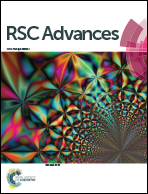Large scale applications of immobilized enzymes call for sustainable and inexpensive solutions: rice husks as renewable alternatives to fossil-based organic resins†
Abstract
Despite the extensive efforts of the scientific community towards the development of a vast variety of immobilization methods, there is a limited number of immobilized biocatalysts used at an industrial scale. Most often, cost issues prevent the transfer of methodologies to large scale but more recently sustainability criteria are also becoming increasingly relevant, so that petroleum based carriers for enzyme immobilization appear unsuitable for responding to the new challenges of green and renewable chemistry. Here we report, for the first time, a preliminary overview of the potential of rice husks as carriers to be employed for both physical and covalent immobilization of enzymes. The data indicate that the chemical versatility of this lignocellulosic biomass, containing also silica, opens wide scenarios for optimizing different immobilization procedures requiring minimal pre-treatments and applicable to various enzymes and process conditions. The mechanical and chemical robustness of rice husks, along with their virtually unlimited availability worldwide, make this inexpensive natural matrix a promising candidate for replacing organic fossil-based carriers for enzyme immobilization.


 Please wait while we load your content...
Please wait while we load your content...